Ocular Surface Squamous Neoplasia (OSSN) - Symptoms, Causes and Treatment
07-04-2024
What is Ocular Surface Squamous Neoplasia (OSSN)?
Ocular Surface Squamous Neoplasia (OSSN) is a type of eye cancer that affects the surface of the eye, particularly the conjunctiva and cornea. This condition typically presents as a growth or lesion on the surface of the eye and can vary in size and appearance. It is important for individuals to seek prompt medical attention if they notice any changes or abnormalities on the surface of their eye, as early detection and treatment are key in managing OSSN. Regular eye exams by an optometrist or ophthalmologist are essential in monitoring the health of the eye and detecting any potential issues.What Are The Causes Of Ocular Surface Squamous Neoplasia (OSSN)?
Ocular Surface Squamous Neoplasia (OSSN) is primarily caused by the human papillomavirus (HPV) infection, particularly types 16 and 18. This virus is known to disrupt the normal cell cycle control mechanisms in the ocular surface epithelium, leading to uncontrolled cell growth and eventually the development of neoplastic lesions. In addition to HPV, other risk factors such as chronic ultraviolet exposure, smoking, and immunosuppression can also contribute to the development of OSSN. Understanding the underlying causes of this condition is crucial for early detection and effective management.What Are The Risk Factors For Ocular Surface Squamous Neoplasia (OSSN)?
There are several risk factors associated with Ocular Surface Squamous Neoplasia (OSSN). These include prolonged exposure to ultraviolet (UV) radiation, history of human papillomavirus (HPV) infection, chronic inflammation of the ocular surface, and immunosuppression. Additionally, individuals with a history of smoking or a family history of OSSN may also be at an increased risk for developing this condition. It is important for patients with these risk factors to be vigilant about their eye health and schedule regular eye exams to monitor for any signs of OSSN.What Are The Symptoms Of Ocular Surface Squamous Neoplasia (OSSN)?
Symptoms of Ocular Surface Squamous Neoplasia (OSSN) can vary depending on the location and severity of the condition. Common symptoms may include a persistent red or irritated eye, chronic eye irritation or discomfort, a visible growth or mass on the surface of the eye, changes in vision, such as blurriness or double vision, and excessive tearing or discharge from the eye. In some cases, patients may also experience sensitivity to light or a feeling of a foreign body in the eye. If you are experiencing any of these symptoms, it is important to schedule an appointment with your optometrist for a comprehensive eye exam and evaluation.How is Ocular Surface Squamous Neoplasia (OSSN) Diagnosed?
Ocular Surface Squamous Neoplasia (OSSN) is typically diagnosed through a comprehensive eye examination by an optometrist or ophthalmologist. During the examination, the eye doctor will carefully examine the surface of the eye using a slit lamp microscope and may also use a special dye called rose bengal or lissamine green to help identify any abnormal areas on the ocular surface. In some cases, a biopsy may be performed to confirm the diagnosis of OSSN. Additionally, imaging tests such as optical coherence tomography (OCT) or ultrasound may be used to evaluate the extent of the neoplastic growth. Early detection and diagnosis of OSSN are crucial for successful treatment and management of the condition.How is Ocular Surface Squamous Neoplasia (OSSN) Treated?
Ocular Surface Squamous Neoplasia (OSSN) is typically treated through a combination of surgical and non-surgical methods. Surgical options may include excisional biopsy, cryotherapy, or Mohs micrographic surgery, which involves removing the tumor layer by layer and examining each layer under a microscope to ensure complete removal. Non-surgical treatments may include topical chemotherapy, such as interferon or mitomycin C, which can help to destroy cancer cells on the surface of the eye. In some cases, a combination of surgical and non-surgical treatments may be used to effectively manage OSSN. It is important for patients with OSSN to work closely with their healthcare team to determine the best treatment plan for their individual case.Is There A Cure For Ocular Surface Squamous Neoplasia (OSSN)?
There is currently no definitive cure for Ocular Surface Squamous Neoplasia (OSSN). However, there are several treatment options available that can effectively manage the condition and help prevent it from progressing. These treatments may include surgical excision, cryotherapy, chemotherapy eye drops, or a combination of these methods. The goal of treatment is to remove or destroy the abnormal cells while preserving vision and preventing recurrence. It is important for individuals with OSSN to work closely with their eye care provider to determine the best course of action for their specific case. Regular follow-up appointments are also essential to monitor the condition and ensure that it does not worsen.How Can Ocular Surface Squamous Neoplasia (OSSN) Be Prevented?
Ocular Surface Squamous Neoplasia (OSSN) can be prevented by practicing good eye hygiene and protecting the eyes from environmental irritants. It is important to avoid smoking and limit exposure to ultraviolet light by wearing sunglasses outdoors. Regular eye exams with an optometrist can also help detect any early signs of OSSN and other eye conditions. Maintaining overall good health through a balanced diet and regular exercise can also contribute to preventing OSSN. By taking these preventative measures, individuals can help reduce their risk of developing OSSN and other eye diseases. Schedule An Appointment
Adult Eye Exams
Our advanced eye exams consist of 25+ modern tests and digital scans to assess eye health, function, and visual acuity.

Child Eye Exams
Give your child a clear future with an annual eye exam from our experienced Edmonton optometrists.

Senior Eye Exams
Maintain your vision through your golden years with gold standard eye care from the optometrists at our Edmonton eye clinic.

Contact Lens Eye Exams
Our eye exams for contact lens wearers include test and digital scans to assess eye health, function, visual acuity, and lens fit.
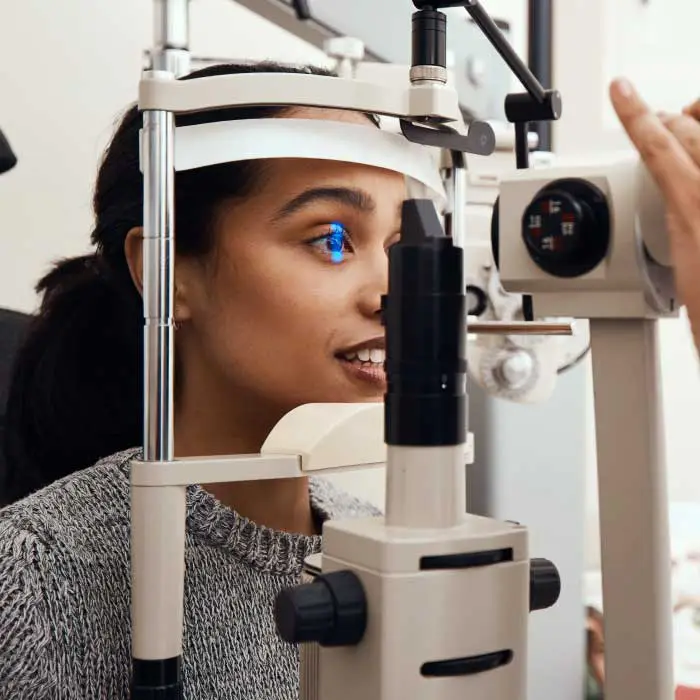
Diabetic Eye Exams
Managing diabetes requires regular eye exams to ensure that diabetes is not causing irreversible vision loss.
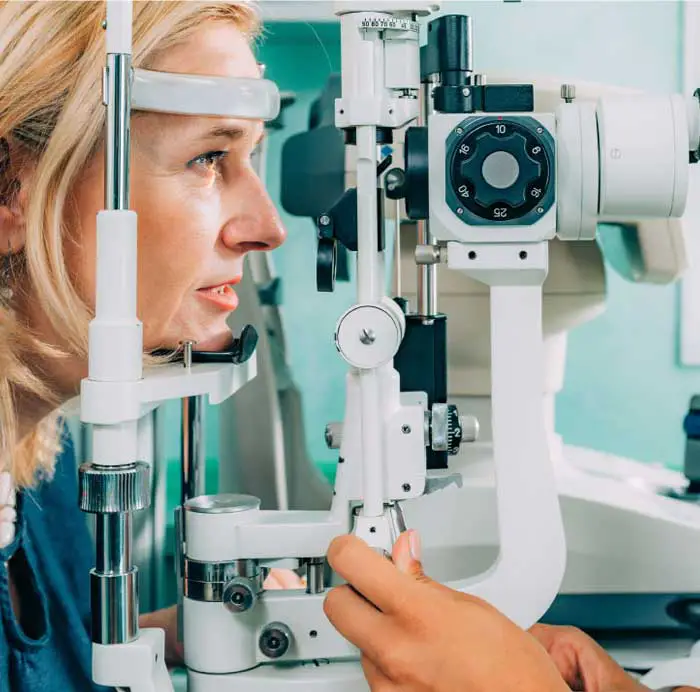
Dilated Eye Exams
Dilating the eyes enables our Edmonton optometrists to see more of the eye so that you many never see less.
Our Edmonton Eye Exams Are Comprised Of 4 Phases Of Evaluation
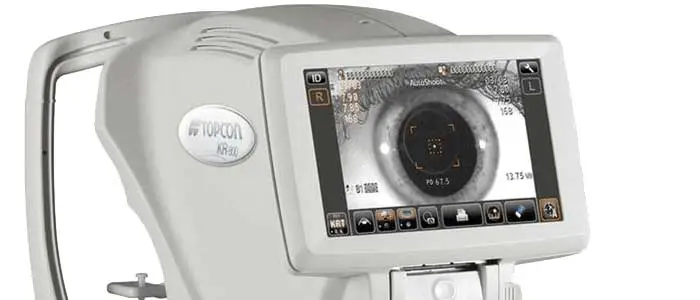
1. Eye Exam Pre-Testing
Corneal Thickness | Intraocular Pressures | Visual Field
Pre-testing is a detailed process that gathers all necessary information for the optometrist in advance of the optometrist-administered eye examination. This process involves completing a detailed patient history, as well as a series of standard tests. Pre-testing is an essential part of the comprehensive eye exam process, providing valuable information and visuals for both the optometrist and the patient.
More About Pre-Testing »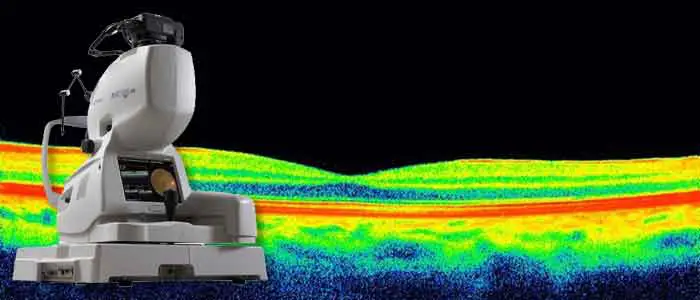
2. Advanced Diagnostic Testing
Retinal Photography, OCT, Topography
eye-deology Vision Care differentiates itself from other clinics by having the most advanced modern diagnostic specialty testing equipment. Specialty equipment, such as a wide-angle high-resolution retinal imager, Optical Coherence Tomography (OCT), Humphrey Visual Field Analyzer and corneal topographer, ensures that patients receive the best comprehensive eye care.
More About Advanced Testing »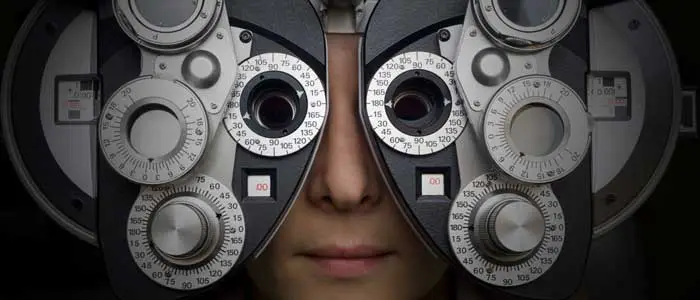
3. Optometrist Examination
Health Assessment & Disease Diagnosis
eye-deology Vision Care Edmonton optometrists perform a multitude of tests and assessments to evaluate ocular health, eye coordination, and visual acuity. In addition, they also evaluate the results of the tests and scans performed during pre-testing. As part of patient education, our optometrists also take the time to show and explain results to patients.
More About Doctor Exam »
4. Eye Glass Consult
Prescription | Lens Selection | Digital Fitting
If you require corrective lenses to improve your vision, our licensed opticians will customize their fit to your unique attributes, needs, lifestyle, and budget. Our opticians are happy to provide you with information about the latest eyeglass frame and lens technologies available so you can make informed decisions and begin seeing and looking your best.
More About Eyewear Consult »